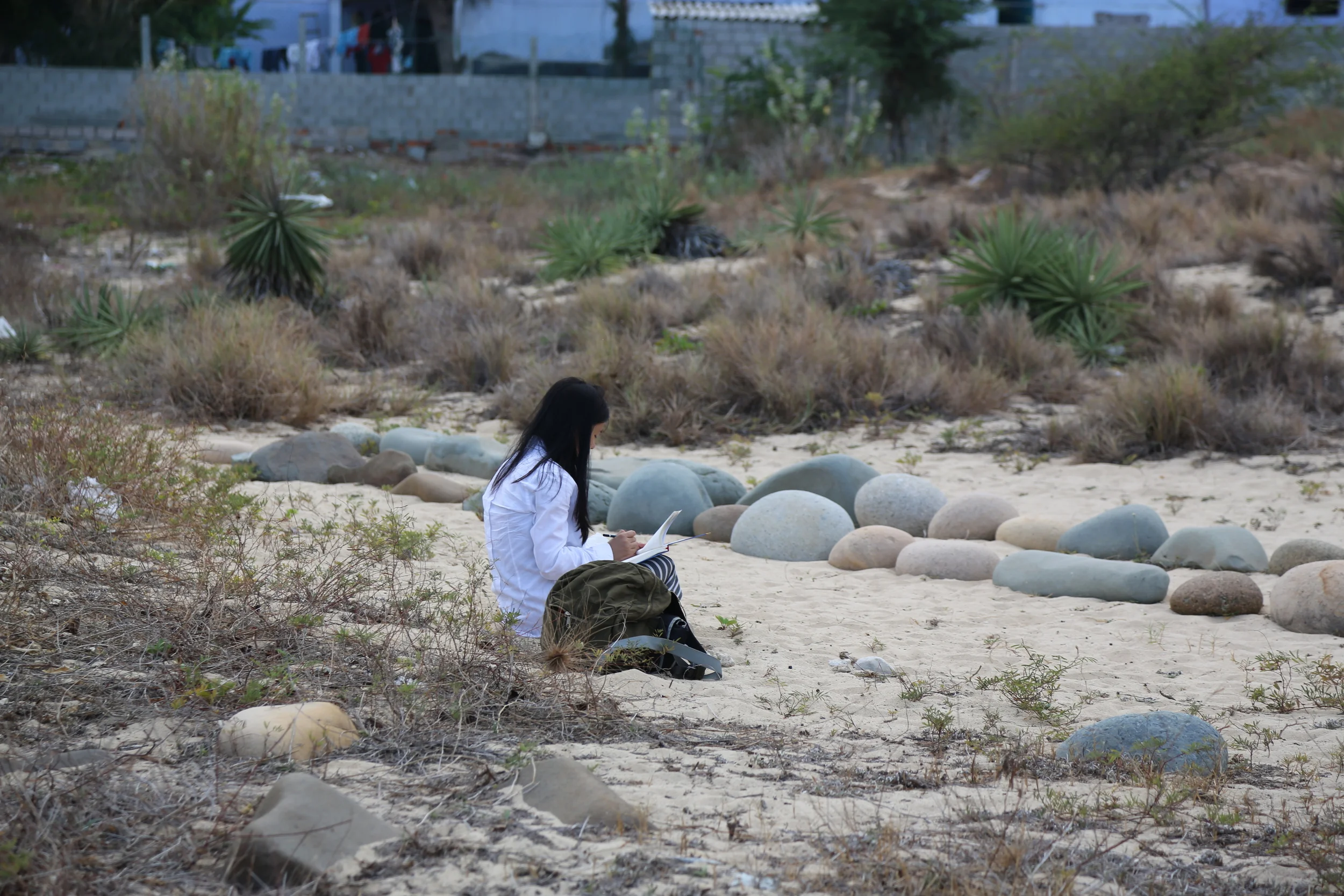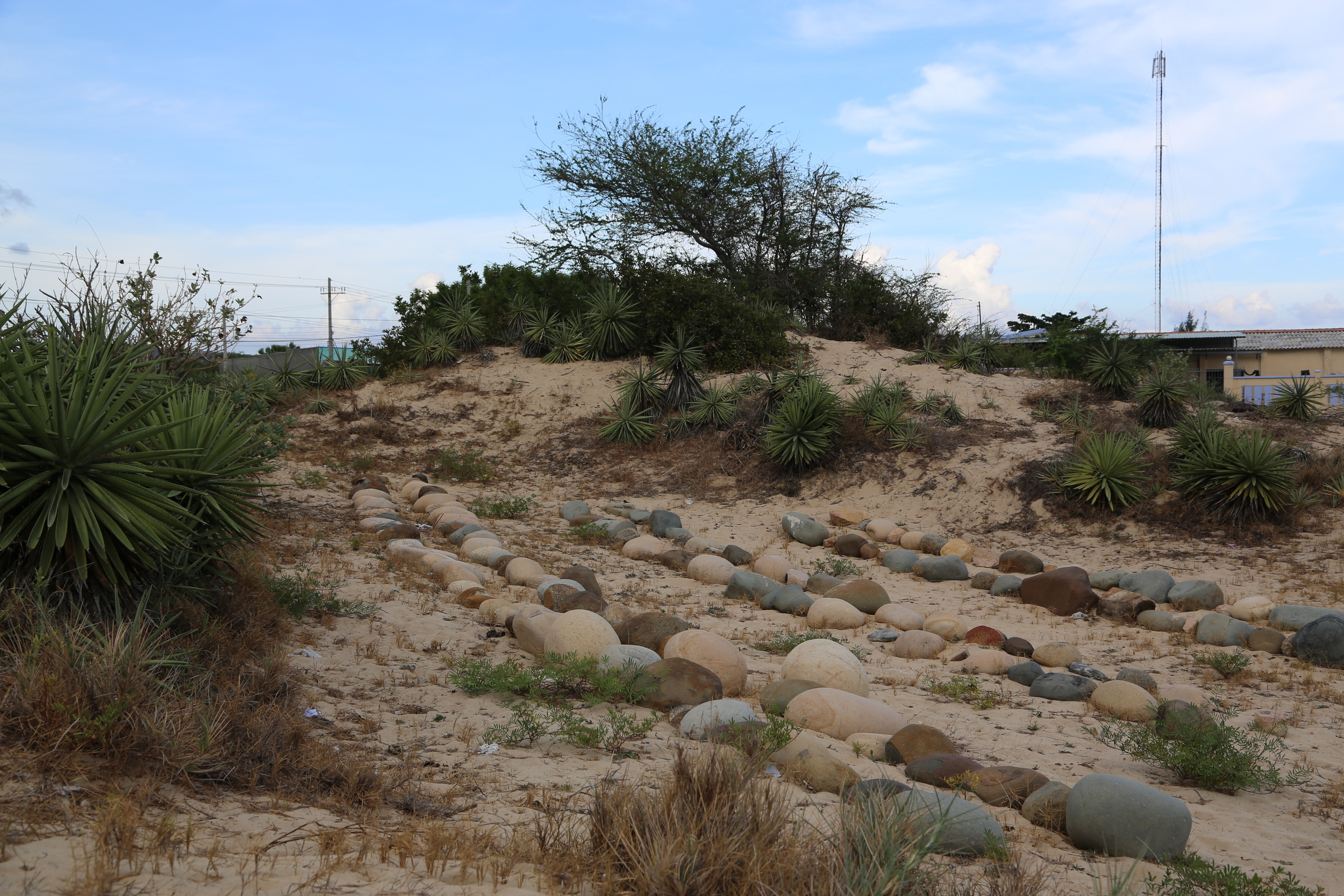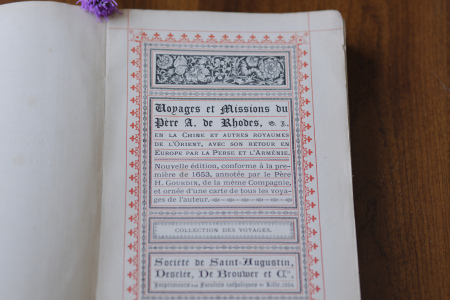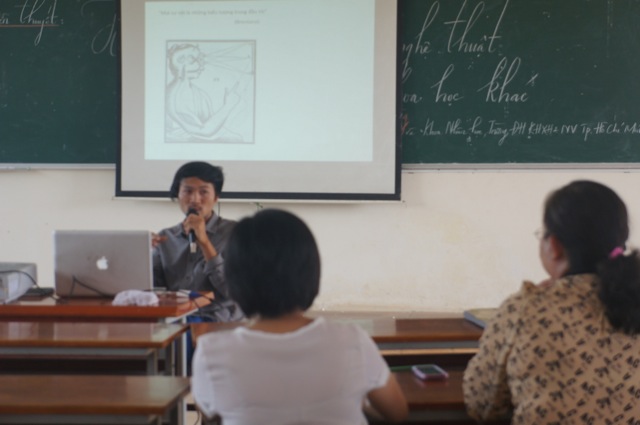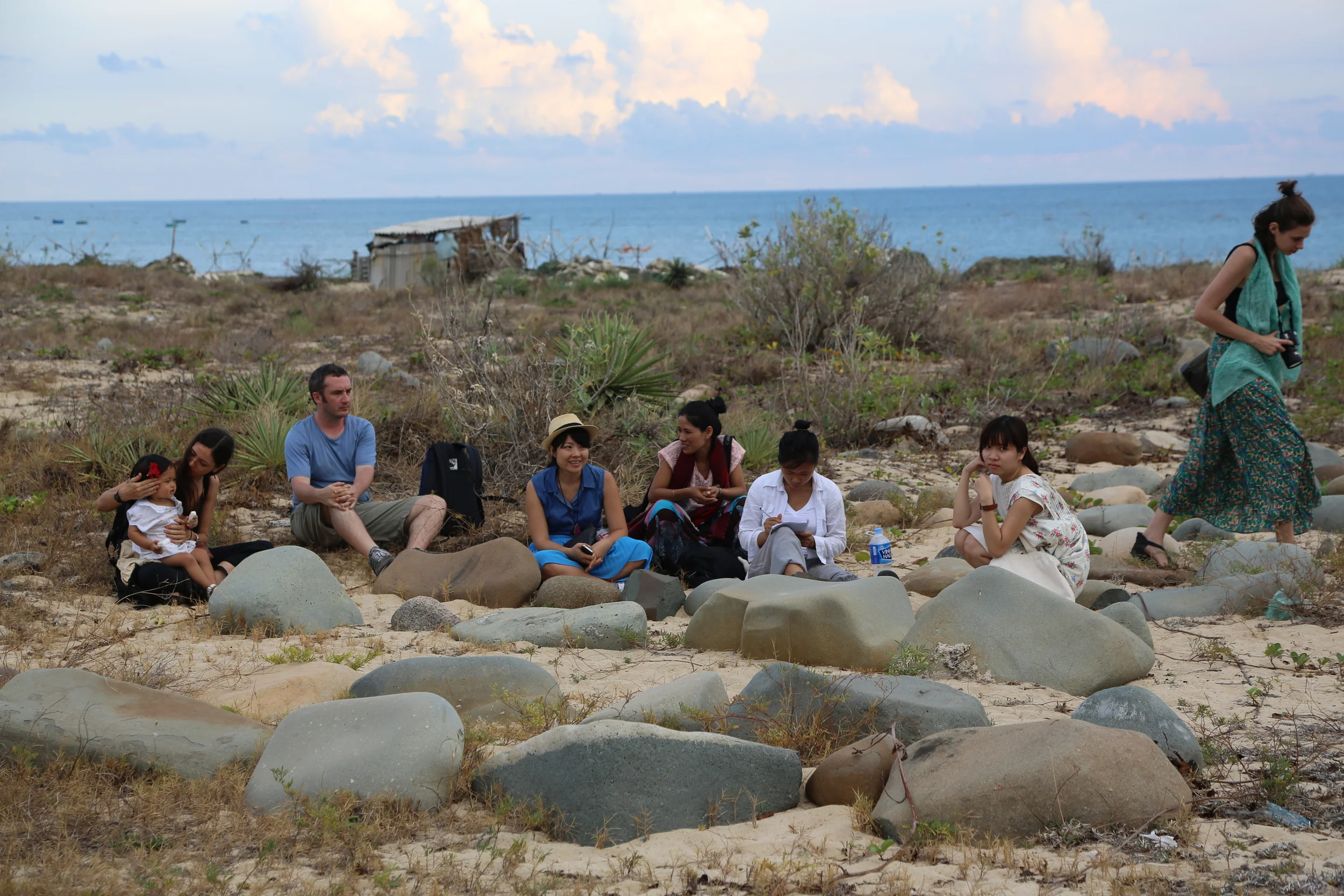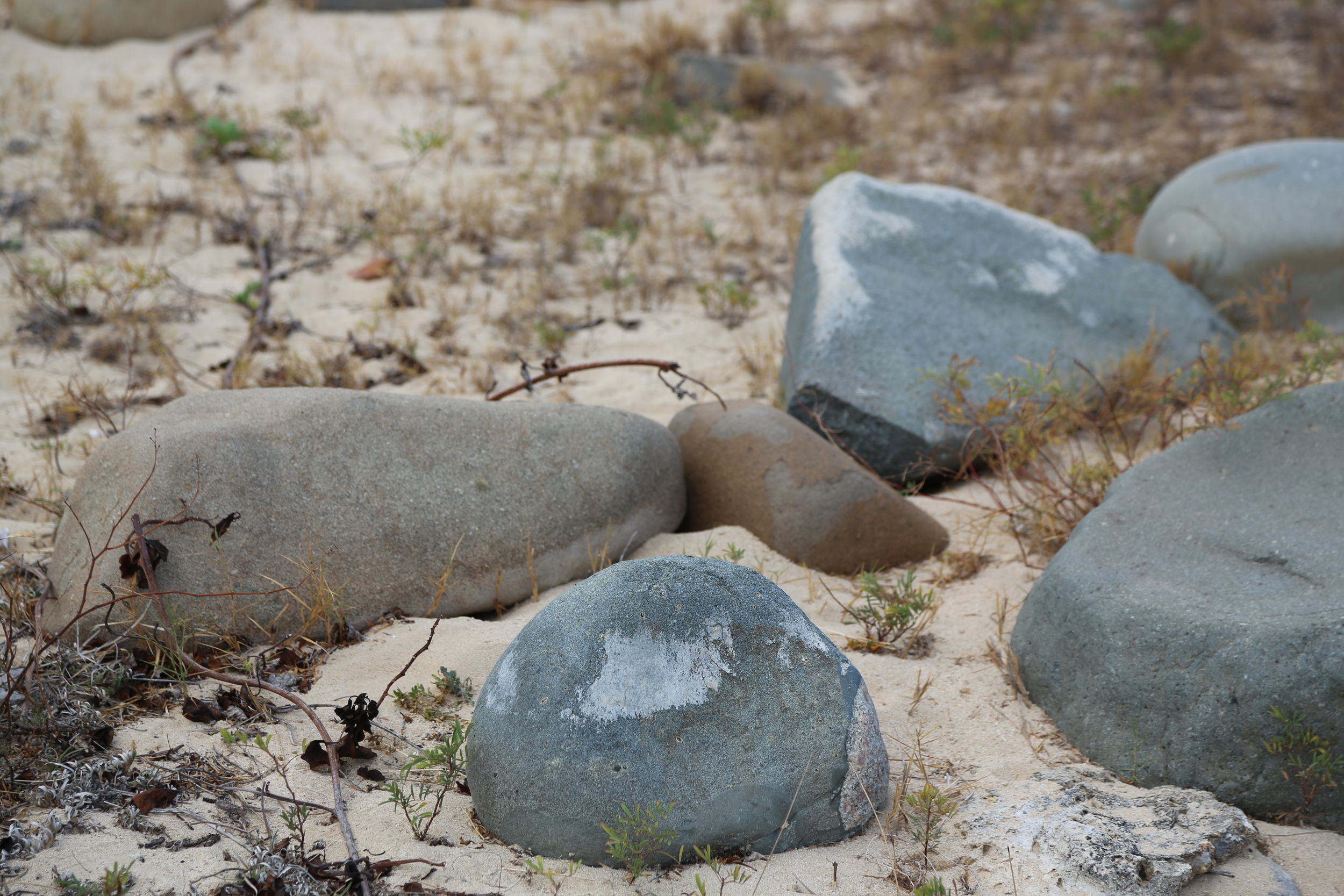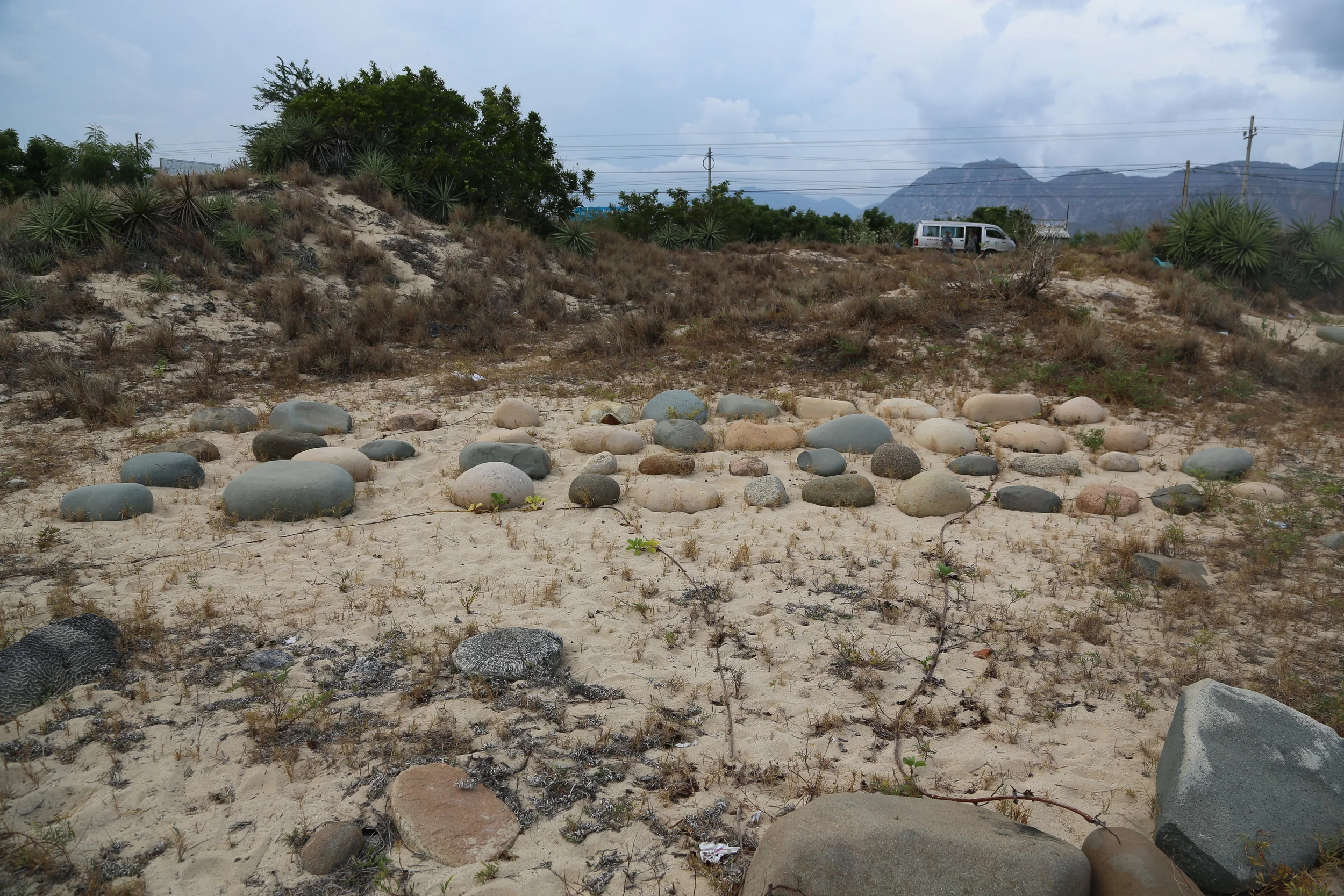The Chăm BàNi's cemetery
/An abandoned land? A zen-inspired garden? A South American desert? A set for a science fiction film?
What one can immediately see are lines of parallel natural rocks, in different forms and colors and the rocks are carefully arranged into a path that is leading somewhere. Between each pair of rocks was buried up to ten bodies. They are buried on top of each other. This is not a site of a massacre, but a cemetery.
Ghur Girai Neh is an ancient cemetery that belongs to the Cham Ba-Ni. The history of the Cham is the poignant history of the defeated. Champa used to be a powerful kingdom that lasted from 192 to 1832. It is now a part of central Vietnam. The Champa nation was invaded by the Dai Viet (Vietnam nowadays) from the north. By doing so the Viet integrated Champa to its map and used it as a path to expand the nation towards the south, including what is the Mekong delta today. In Champa there are two main religions, Hindu and Ba-Ni. Hindu has Indian origins and Ba-ni is originally rooted in the Islam of the South East Asia region. However, Ba-Ni split of from Islam, it was transformed and localized by the Cham to be a new kind of religion.
We used motorbikes to get to the cemetery. It is next to a fishing village that is around 20 km from Phan Rang City. There is something beautiful and sad about this place. It is alongside the main road, but it is a cemetery with no names, no fences, and no signs to notify us of what it is. Yet for us, this is an entirely foreign scene. We are a group of 5 Vietnamese, 4 American and 1 British visitors, none of us have ever seen a Cham Ba-Ni cemetery. We were able to get here with the help of a local friend. This place for them is a sacred place. The cemetery is no longer in use but the Cham still visit the cemetery once a year to bring offerings and to worship their ancestors. Therefore, when we arrive, the place looks abandoned. The land is filled with waste and trash from the fishing village, and the cemetery itself is slowly disappearing by both natural causes and man-made causes.
The land is near the coastline, from which sand is blown by the wind to cover up the round stones that mark the burial site. Many of the stones are hidden under the sand. The stones do not have names. The Cham believe in a culture of namelessness, authors used to not sign their writings, and the dead person isn’t named but marked with two stones, one at the beginning and one at the end of their body. This concept of namelessness is alien to most of us, the so-called civilized beings who trust the system of names and identity.
The plants at the cemetery have structural, strong shapes: cactuses, blue agave, beach morning glory…and many unknown succulent plants. They look dry and hard, in much the same way as the people that live here. It is so strange to have plants that are a good representation of their human counterparts
Goats wandering around the area looking for edible plants
People in the fishing village are not Cham. The Cham Ba-Ni never built cemeteries next to their houses. The Kinh[1] came here, surrounded the land with their bare cement houses, discarded waste in the land and treated it as an abandoned place. Some built houses on top of the cemetery, removed the stones that marked the site of the dead and used the stones to build wall in their backyards or to decorate their gardens.
Houses are built in the area of cemetery. They remove the stones to built houses on top.
The government when opening a new national road in the 1990s split the cemetery in half. A new wide road erases part of the cemetery. Now the dead have to lie in eternal separation.
I have never seen anywhere a way of arrangement of death that is so modest, simple and minimal: no name, no fence, and no altar. Just natural stones mark the site. This is the art of how to die aesthetically.
During our trip, like tourists, we visited the largest remains of the Cham temple, the PôKlông Garai. What I saw was an absurd scene. A group of Cham women, with their pots in hand, wearing their colorful traditional dresses, posed next to the temple for a group of Chinese tourists. The tourists were equipped with the best cameras and gears, proudly taking pictures of the local women. The photography tour ends up as a shared happiness: the local women were happy to be photographed and to get paid. The tourists were happy to capture images of exotic places.
A Cham woman dresses up to pose for tourist pictures
Group of Chinese tourists taking pictures of the local women
Two kinds of abusive events are produced.The invasion of the Cham Ba-Ni cemetery is a form of abuse by a majority power towards a less powerful ethnic group. The second event involves the voluntary action of the Cham women posing for the tourists, propagating a fiction of their culture.

